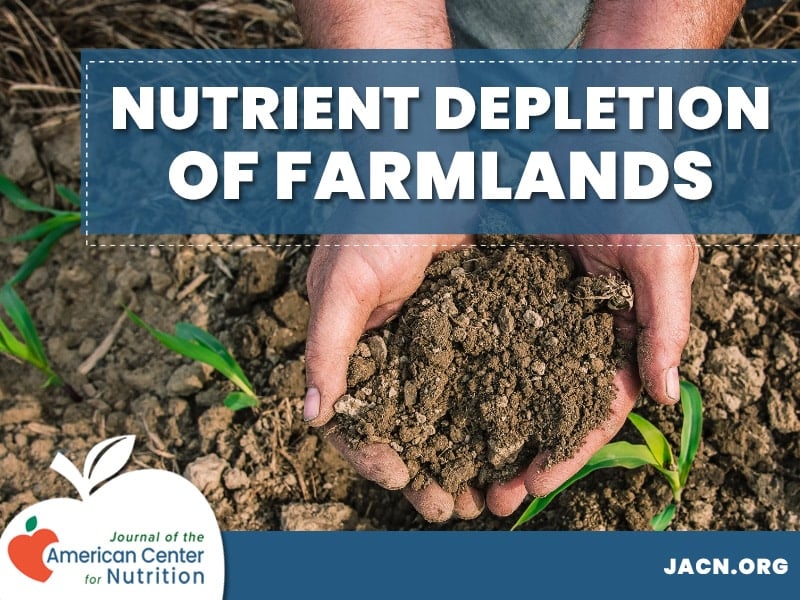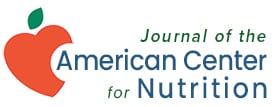Are Food Crops in the USA Becoming Less Nutritious?
Crops and plants acquire nutrition from the soil they grow in. Humans need to grow healthy plants in nutrient-rich soil for fruit, vegetable, and grain intake. Nutrient depletion of U.S. farmlands and soil has resulted in nutrient-sparse plants and animal meat, creating a gradually unfulfilling and nutritionally deficient diet for Americans.
What Is Soil Nutrient Depletion?
To follow a healthy diet, people must consume specific amounts of vital vitamins and minerals daily. For example, the National Institutes of Health recommends that adult men consume 90 mg of vitamin C daily and women 75 mg [1]. To put it into perspective, one raw tomato only has 17 mg of vitamin C, which is approximately 19% of the required daily intake [1].
So, why must people eat so many fruits and vegetables daily to reach their required levels of vitamin A, vitamin C, calcium, iron, and more? Soil quality directly impacts how many milligrams of various nutrients any plant may contain. As U.S. soils experience gradual nutrient deficiencies, so do the foods circulating through grocery stores. As a result, people receive less and less of their required nutrients.
Depleted Soil by the Numbers
Soil health depletion may seem like a myth without examining the existing research. Many people don’t believe that food has lost nutrition over the last few decades, though the numbers speak for themselves.
Beyond U.S. fields, over 33% of the world’s soils are experiencing moderate degradation levels, with more than 50% of agricultural land suffering [2]. Due to such nutrient depletion, nitrogen levels in soil have decreased by 42%, sulfur by 33%, and phosphorus by 33% [3]. Plants require these elements, typically found in healthy soil, to flourish.
As a result of lacking elements, fruits, vegetables, and grains have experienced a severe drop in nutritional content since 1950. A research study between 1950 and 1999 compared the nutritional content of 43 crops and found that each saw calcium, vitamin C, magnesium, phosphorus, riboflavin, and iron levels drop by 6% to 38% [4].
The soil erosion effects don’t just stop at vitamins and minerals. Additional studies discovered corn protein content depletions from 30% to 50% between 1920 and 2001 [5]. A study on magnesium deficiency in food found that wheat and vegetables have lost as much as 25% of their previous magnesium content [6].

Industrial Causes Behind Nutrient Depletion of U.S. Soil
Current U.S. industrial farmlands and agricultural practices are depleting soil nutrition by as much as 1,000 times the restoration rate, which may only leave a few decades before many farming regions lose their ability to harvest [7]. So, why is nutrient depletion of U.S. farmlands and soil happening?
Monoculture
Soils act like any other ecosystem. Each plant variety provides the soil with various elements that provide nutrients to the other plants. Unfortunately, many industrial farms practice monoculture, focusing on just one crop yearly.
Growing the same crop every year kills fertile soil and increases the risk of crop-killing blight. For example, one disease could destroy the entire crop, whereas a diverse farm would likely still have certain species that can survive.
To correct this and reduce nutrient depletion, researchers recommend farmers rotate through perennial crops, forages, and legumes to consistently introduce necessary nutrients and prevent erosion. For example, adding legumes to the farm can increase soil nitrogen levels through bacterial conversions, which reduces the need for synthetic nitrogen fertilizer [8].
Heirloom Varieties vs. Hybrids and GMOs
Heirloom plants are original and natural vegetables that can reproduce with their own seeds. For example, a gardener could use the seed of an heirloom tomato to grow a new plant.
Conversely, hybrid and GMO varieties refer to mechanically engineered or crossbred species. Genetically modified organisms (GMOs) and hybrid plants typically include increased levels of nutrients since heirloom species often don’t have the fertile soil necessary to achieve such nutrient levels naturally. While such new varieties may sound like a solution, they can deplete soil further as farmlands rely on engineering solutions rather than solving the underlying issue.
Synthetic Fertilizers and Pesticides
Industrial-grade farms typically use synthetic fertilizers for large-scale crop growth. Synthetic fertilizers kill soil microbes, which imbalances nutrient levels and soil homeostasis [8]. Furthermore, the manufacturing process for synthetic fertilizers consumes large amounts of energy and fossil fuels, causing negative environmental effects on a global scale beyond just soil impacts [9].
Pesticides, herbicides, and fungicides improve crop yields by removing harmful organisms from the soil, though they also kill vital microbial populations that help balance soil nutrition. Pesticides can also harm the butterfly and honeybee populations in charge of pollination [10] [11].
Tilling
Tilling flattens land, mixes topsoil, and removes crop residues, and it reduces microbial populations, increases soil erosion, and lets out harmful greenhouse gasses. Most global croplands use tilling methods that significantly reduce soil nutrition levels [12].
Monotonous Grazing
Ruminants and cows consume grass and convert it into nutrient-dense soil via manure. When animals regularly rotate through fields, plants have time to grow and replenish.
Monotonous grazing reduces soil fertility and contributes to soil erosion. Overgrazing is partially responsible for the global loss of approximately 20% of available grasslands [13].
Potential Solutions to Boost Soil Nutrients
If humans continue producing food at the same rate using the same methods, global farmlands may quickly run out of the fertile soil required to create nutrient-packed, healthy food. The only way to prevent such catastrophes is by reversing the above impacts. Industrial farmlands should:
- Increase crop variety
- Introduce additional ruminants (grazing animals) like cows
- Rotate grazing fields
- Reduce mechanically engineered species
- Select organic and natural fertilizers and pesticides
If industrial-grade farms introduce the above practices, soil nutrition may slowly repair over time rather than rapidly diminish.
Conclusion – Farming Practices Must Change
Nutrient depletion of U.S. farmlands and soil is a severe concern that affects all humans beyond American citizens. Unsafe industrial and agricultural practices harm the environment and reduce every person’s ability to access the nutrients needed to survive. Farmlands must make a change now before depleting what little resources are left.
REFERENCES
- https://ods.od.nih.gov/factsheets/VitaminC-HealthProfessional/
- https://www.eld-initiative.org/fileadmin/pdf/ELD-pm-report_08_web_72dpi.pdf
- https://pubmed.ncbi.nlm.nih.gov/27670741/
- https://pubmed.ncbi.nlm.nih.gov/15637215/
- https://dr.lib.iastate.edu/server/api/core/bitstreams/140b830b-fa83-48f4-b4a6-0cf0d6faf0a1/content
- https://link.springer.com/article/10.1007/s11104-012-1471-5
- https://www.sciencedirect.com/science/article/pii/S0160412019315855?via%3Dihub#bb0075
- https://www.jswconline.org/content/71/2/156
- https://pubmed.ncbi.nlm.nih.gov/19875786/
- https://pubmed.ncbi.nlm.nih.gov/28708851/
- https://pubmed.ncbi.nlm.nih.gov/26333931/
- https://www.tandfonline.com/doi/full/10.1080/00103624.2015.1005227?cookieSet=1
- https://pubmed.ncbi.nlm.nih.gov/30215340/

